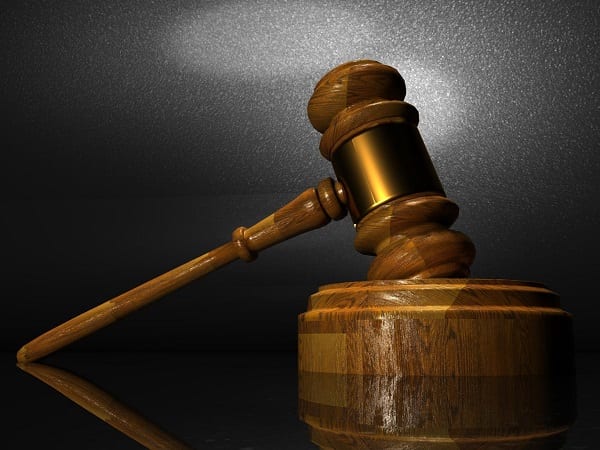BALTIMORE, MD—Maryland Attorney General Brian E. Frosh, joined by the Attorneys General of Virginia and the District of Columbia, on Monday filed a Notice of Intent (NOI) to sue the Environmental Protection Agency (EPA) over its failure to require Pennsylvania and New York to develop and implement plans to achieve 2025 Chesapeake Bay restoration goals.
Under the Clean Water Act, EPA has a nondiscretionary duty to “ensure that management plans are developed and implementation is begun by signatories to the Chesapeake Bay Agreement to achieve and maintain” the Bay Total Maximum Daily Load (TMDL). The TMDL is a comprehensive “pollution diet” aimed at restoring clean water in the Bay States that sets limits for nitrogen and phosphorus pollution, in addition to reductions in sediment.
EPA’s recent evaluation of each Bay state’s Watershed Improvement Plan (WIP) concluded that Maryland, Virginia, and the District of Columbia will all attain their respective necessary load reductions by 2025. EPA also concluded that the plans submitted by Pennsylvania and New York were deficient, falling short of nutrient reduction goals and lacking in sufficient funding. EPA has not, however, required Pennsylvania or New York to develop or implement plans that fully meet the pollution reduction goals.
“The Chesapeake Bay is one of our country’s most valuable natural resources,” said Attorney General Frosh. “Restoring the health of the Bay will take a coordinated, multistate effort with every state sharing the burden. EPA has abandoned its responsibility to regulate and manage the efforts of the Bay states. Together, we fully intend to hold EPA accountable and require it to perform its regulatory duty.”
“Protecting and restoring the Chesapeake Bay requires a comprehensive effort by each of the watershed states as well as the EPA,” said Virginia Attorney General Mark R. Herring. “As the administrator of the Chesapeake Bay Agreement, EPA must treat each of the partners equally and make sure every state is pulling its weight and upholding its portion of the agreement, but instead, the Trump EPA simply rubberstamped plans that are plainly inadequate. I hope we are able to come to an understanding that is beneficial for all parties, while keeping the health of the Bay at the forefront.”
“Our coalition of State Attorneys General will not allow the EPA to walk away from its enforcement obligations and undermine decades of work to reduce pollution across the Chesapeake Bay watershed,” said D.C. Attorney General Karl A. Racine. “The District is committed to reaching our pollution reduction goals, but if other states are not doing their part, and the EPA is not keeping watch, we will fail to restore the Bay and our local waters, including the Potomac River.”
“Maryland will continue to work with all of our partners to meet Bay restoration goals, as this important lawsuit moves forward,” said Maryland Environment Secretary Ben Grumbles. “EPA must be held accountable to enforce the clean water commitments made by our upstream partners.”
In 2007, the Bay States and EPA agreed that EPA would establish a TMDL for the entire Bay Watershed. Pursuant to that agreement, in 2010, EPA established the Bay TMDL, a comprehensive “pollution diet” aimed at restoring clean water in the Bay States. The Bay TMDL sets limits for pollution that equate to a 25 percent reduction in nitrogen, a 24 percent reduction in phosphorus, and a 20 percent reduction in sediment. The Bay TMDL further allocates these pollution reductions to the respective Bay States, including Pennsylvania and New York, with a 2025 deadline to achieve the reductions.
To ensure they met the Bay TMDL’s goals, EPA required each Bay State to submit a series of WIPs detailing how it would achieve its allocated pollution reductions over the course of the Bay TMDL’s term. EPA received the third and final WIP for each Bay State on August 23, 2019. EPA concluded that the Phase III WIPs submitted by Maryland, Virginia, and the District of Columbia showed they would attain the necessary load reductions by 2025. EPA similarly concluded that Delaware and West Virginia had submitted Phase III WIPs that met their respective numeric planning targets and would attain the necessary load reductions by 2025. Pennsylvania and New York, however, submitted Phase III WIPs that failed to meet their planning targets. Pennsylvania’s plan, as approved by EPA, would only achieve approximately 75 percent of its target for nitrogen reduction and reflected significant deficiencies in funding. New York’s plan would only achieve a 64 percent nitrogen reduction – falling short of the planning target by nearly 1 million pounds per year.
EPA has not required Pennsylvania or New York to prepare a Phase III WIP that remedies these deficiencies. The obligations of Pennsylvania and New York in the Bay Agreement and Bay TMDL are critical to restoring clean water in the Chesapeake Bay and its streams, creeks, and rivers. Yet EPA has allowed these jurisdictions to send approximately 10 million excess pounds of nitrogen into the Chesapeake Bay and its watershed every year, and threaten the success of efforts to restore the Bay.

